North Wales Golf Club has one of those courses which will be off the radar to many. Overseas visitors to our shores, rightly, head to the coasts of Fife, the Moray Firth, the Lothians, Ayrshire, Northern Ireland, Lancashire and Kent. But many golfers from the Manchester and North Midlands areas of England flock to the North Wales courses, especially in winter when their own clay-based courses are waterlogged. On viewing these pictures of North Wales you might wonder why. Well the answer lies in the fact that this has been an appalling summer, incredibly wet, unbearably dark and frequently cold. These pictures were taken in early- to mid-afternoon in high summer, on the first day of competitive play at this year’s Open Championship at Lytham! I have tried to brighten them a bit in the computer but there is no escaping the weather or its effect on the course.
I know little of the history of the course other than to learn from the website that the club was formed in 1894 by Tancred D Cummins, a Manchester cotton businessman. He brought John Ball to the course at an early stage, Harold Hilton, too. Whether either of these had a hand in the layout I cannot say. However, it is well-known that the Royal Liverpool Club had huge influence in North Wales in the formative years of golf in the region.
On this occasion I did not play the course – I played it quite a bit in the 1980s and early 90s – but walked round with four Finnish visitors. They had played some of the finest courses in Britain, particularly links, on previous visits. But they were concerned that there may be delays with their flights, hire car problems, or road congestion, so I suggested they start their Welsh trip at North Wales: easy to access and with a gentle green fee. What they thought on the first tee they were too polite to say but it set the tone for the round: lots of quirk, blind or semi-blind shots, narrow fairways, tiny well-contoured greens, and a high count of lost golf balls!
The course is not long, 6254 yards to a par of 71 from the back tees, but Henry Cotton saw fit to describe it as ‘a gem’ when he played it in qualification for the 1954 PGA Championship held at neighbouring Maesdu.
1. 334 yards par 4
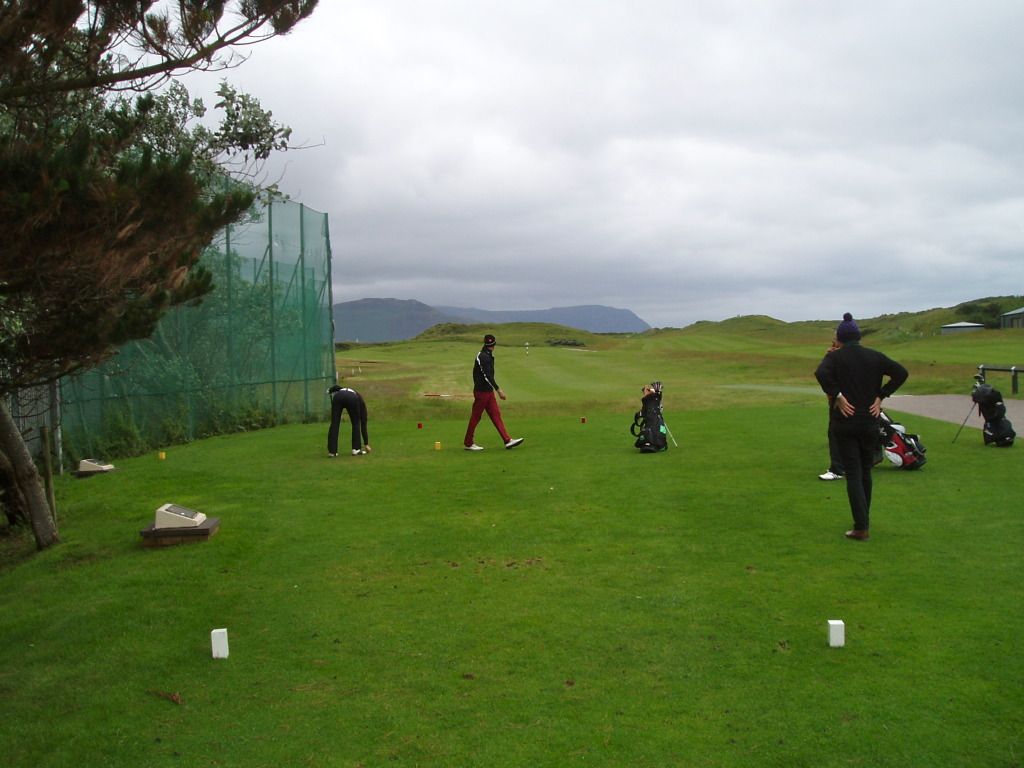
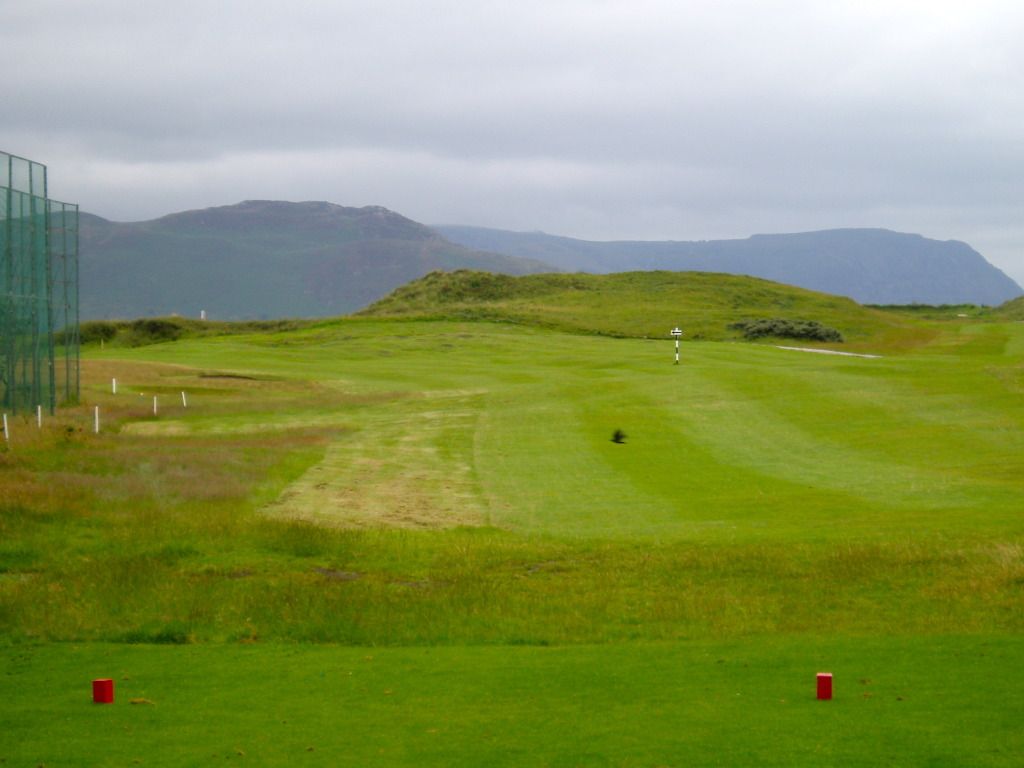
The perplexing view from the first tee. First time visitors may want to play safe, but how safe? Tigers with local knowledge will fancy a shot over the OOB at the hidden green.
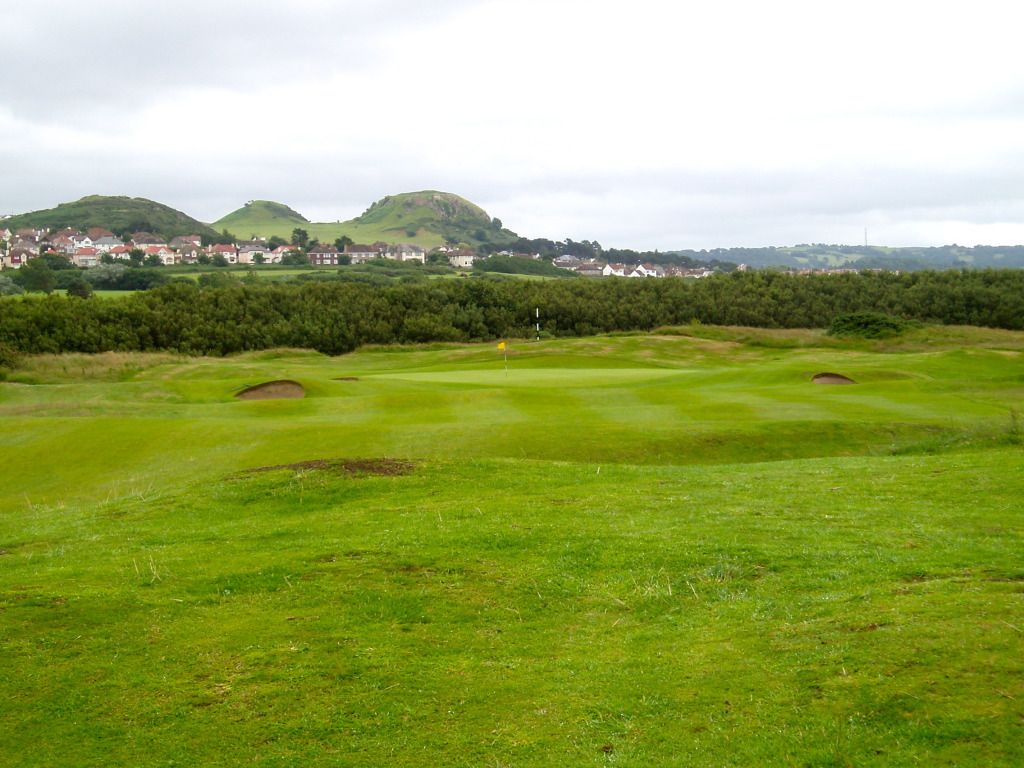
The green is at the foot of a downslope, but there are enough undulations to make the approach shot tricky to judge.
2. 356 yards par 4
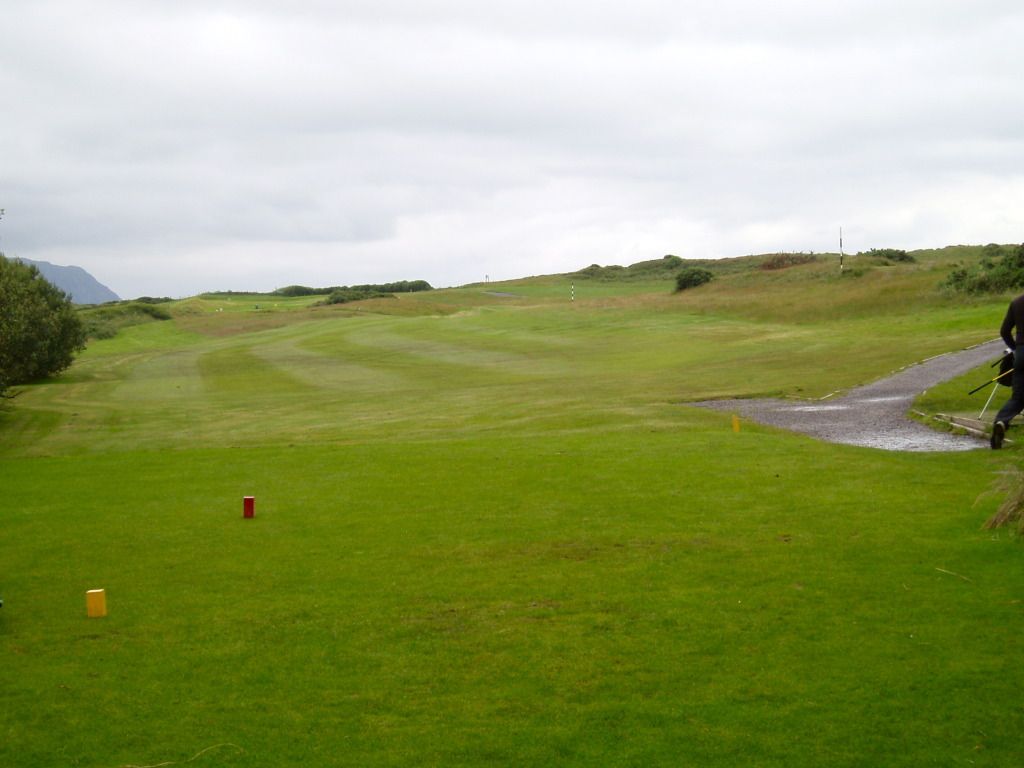
Play from the second tee is from a low, damp corner beyond the first green. A marker post 211 yards out gives the line, with OOB again on the left.

Here we see a little bit of the bunkering on the approach to the raised green….

….but not all of it.
3. 365 yards par 4
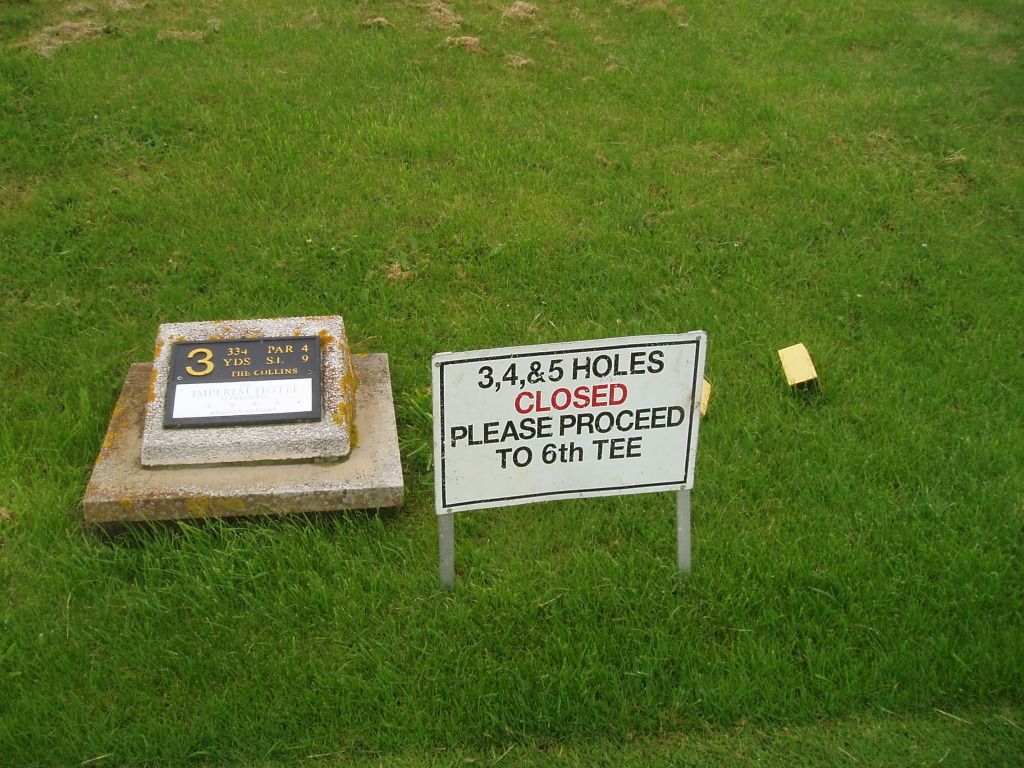
The next three holes were closed because they were awash.
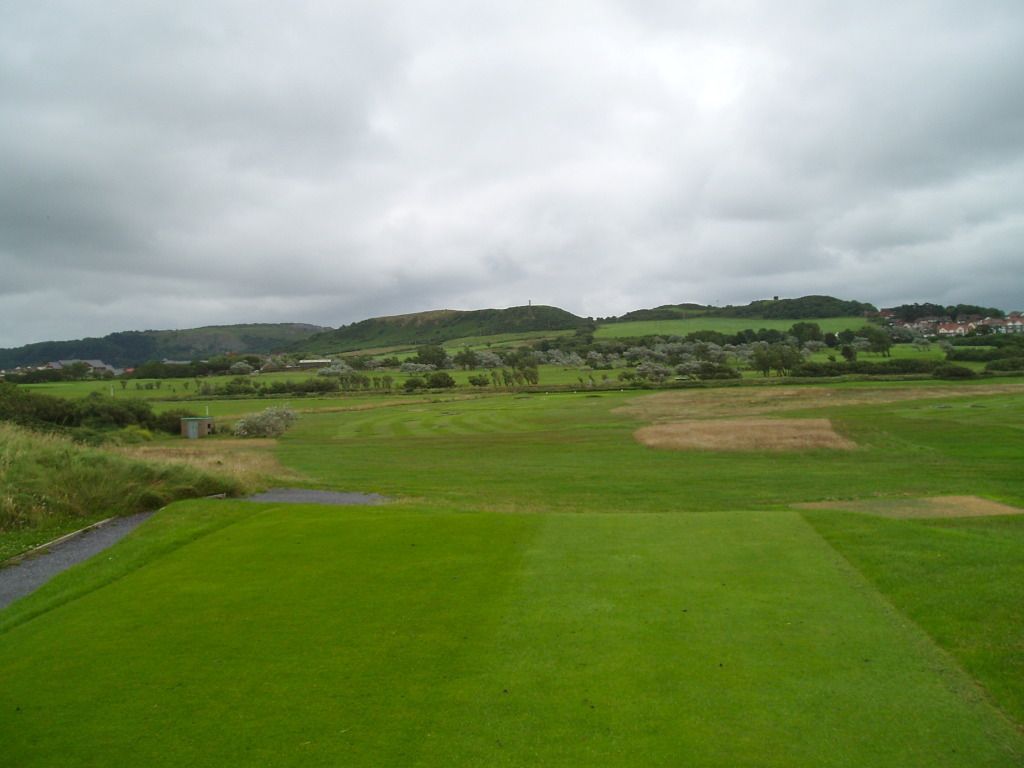
This is the 3rd,, again with OOB on the left and a ditch crossing the fairway 279 yards out.
4. 193 yards par 3
5. 537 yards par 5
You may be able to pick out the 4th running along the boundary of the course beside the railway which divides North Wales from Maesdu. The 5th climbs inexorably, all the time bending to the left as it does so. You can get an idea of the extent of the flooding. I cannot say I was sorry to omit these three holes. They are the least links-like on the course.
6. 382 yards par 4

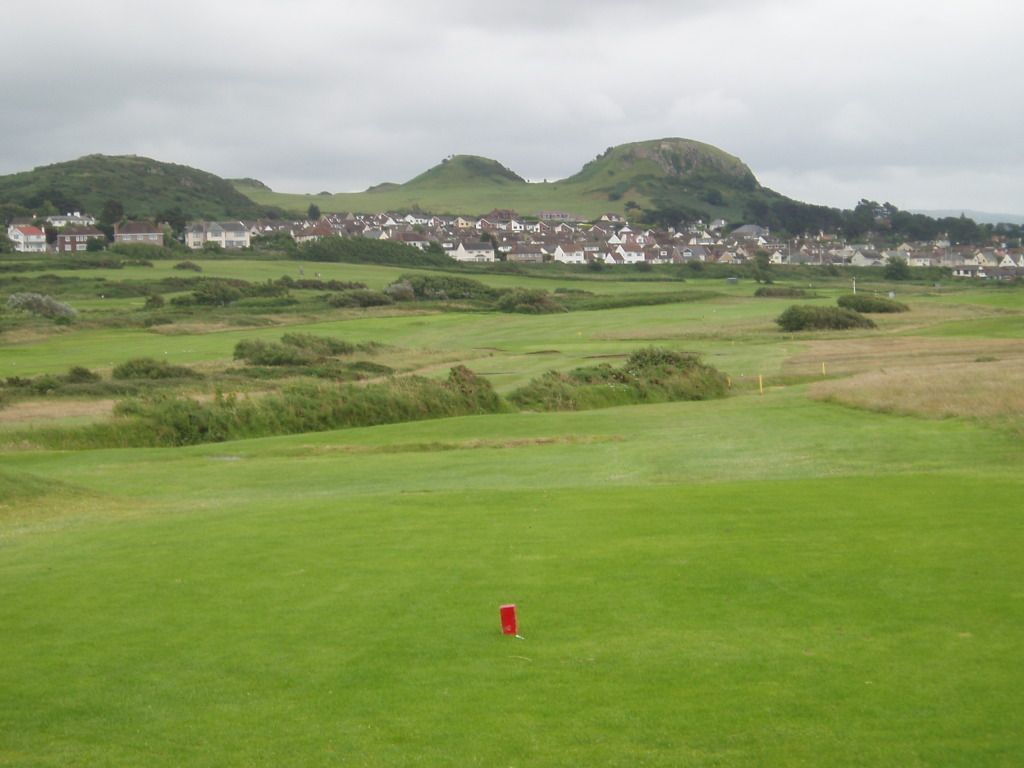
The angle at which the fairway runs as perceived from the tee complicates driving. It is another hole that is easier second time round.
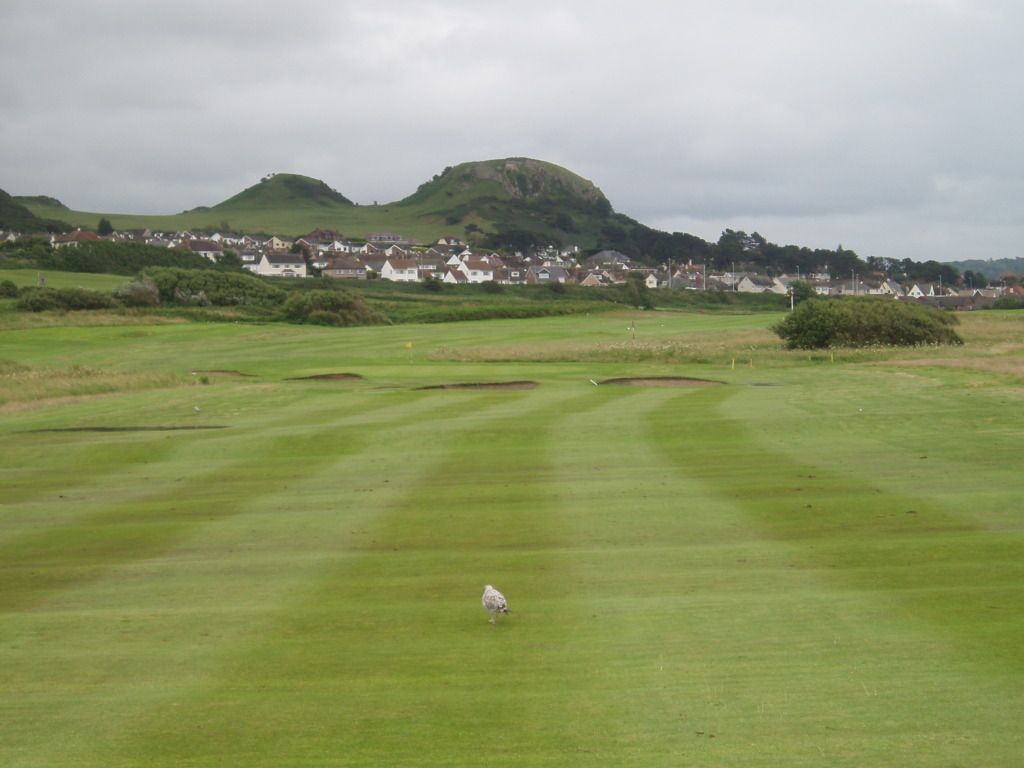
Those bunkers are further from the green than appearances suggest, 66 yards on the right, 33 on the left. The putting surface is only 26 yards deep, the shallowest so far.
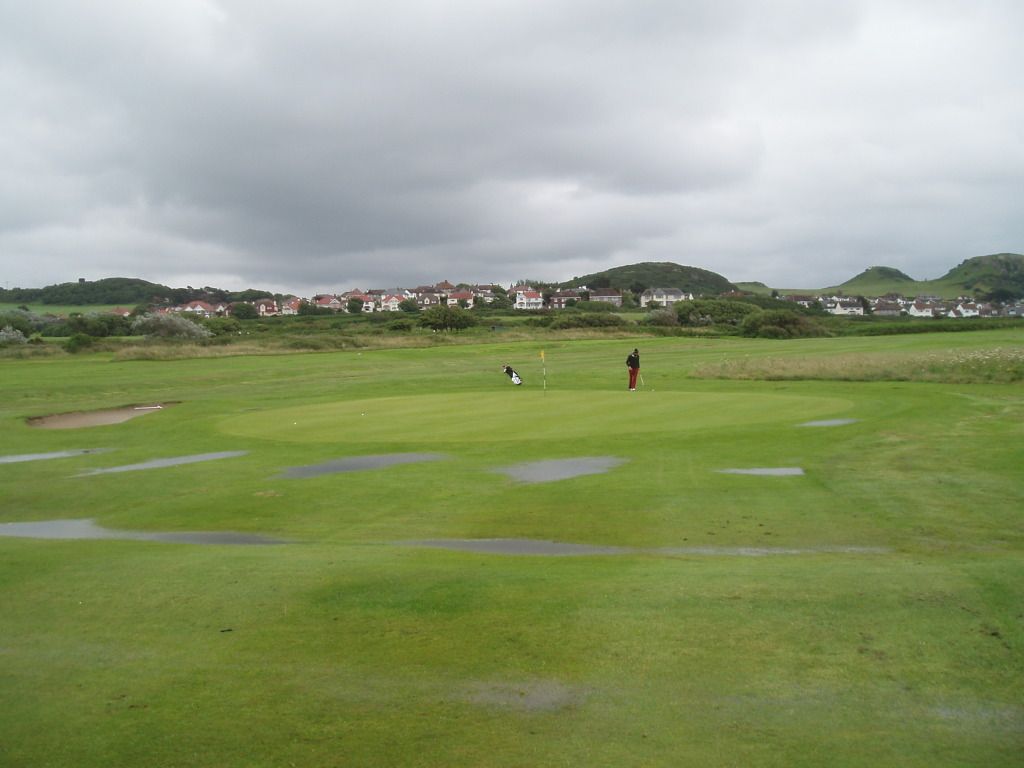
It was wet here, too!
7. 501 yards par 5
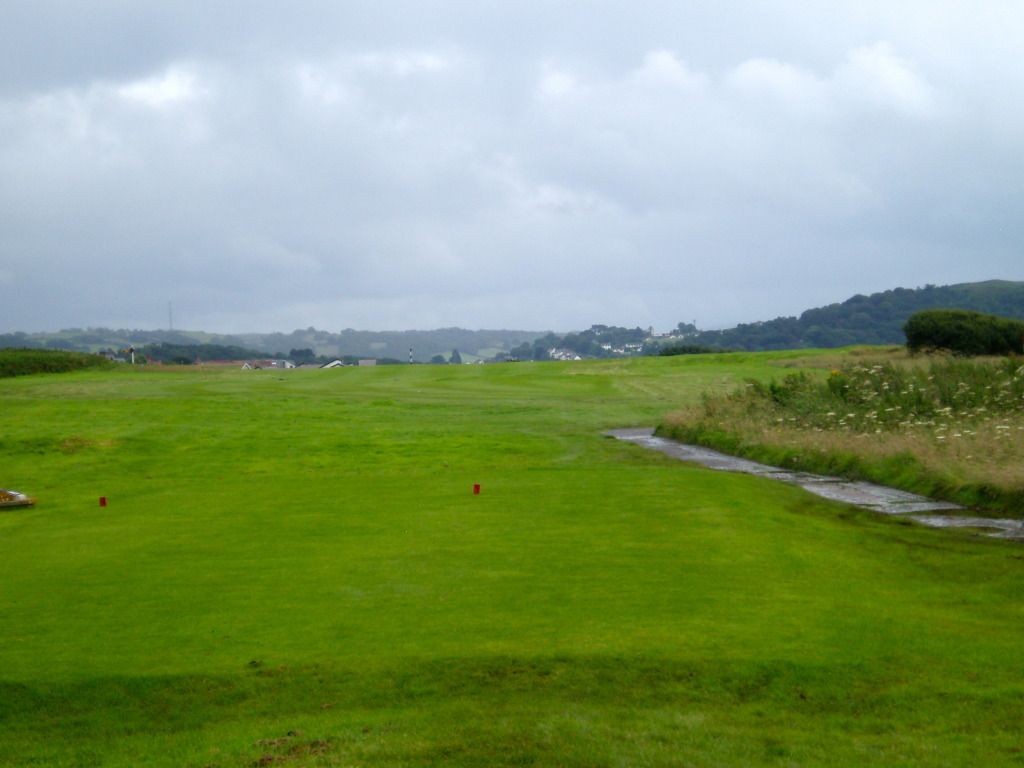
Even the walk from the previous green was a soggy affair! The prospect is not auspicious.
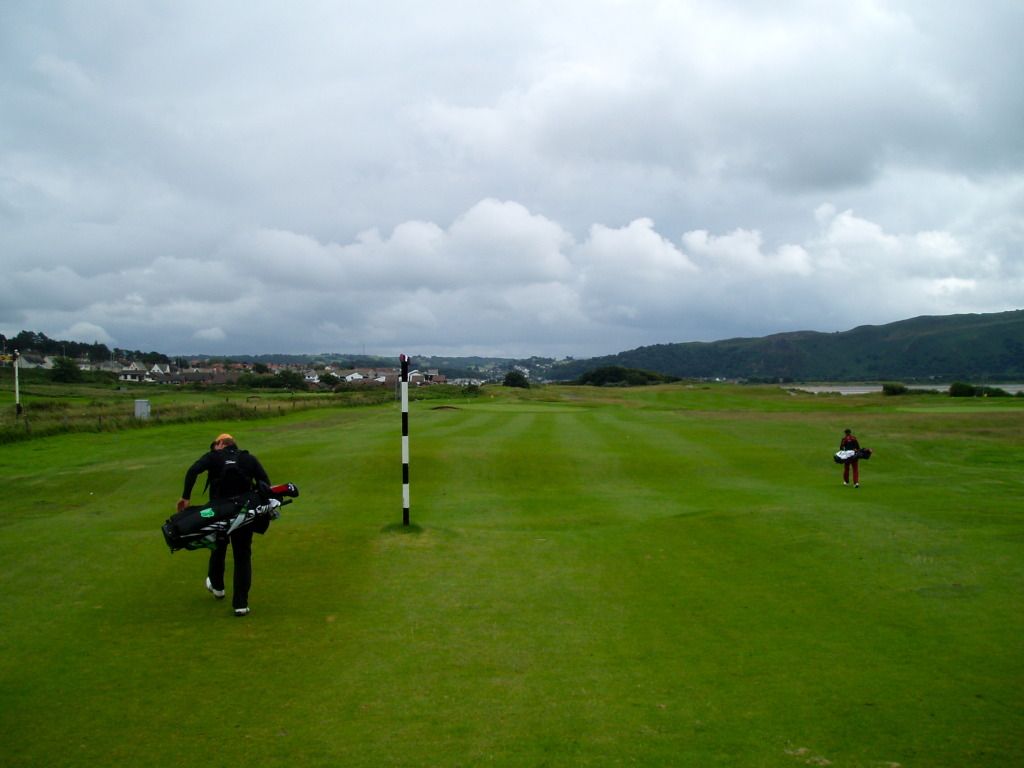
But all changes after the marker post 160 yards short of the green, as the ground turns to pure sand, the course dries out a lot and the turf is crisp.
8. 384 yards par 4
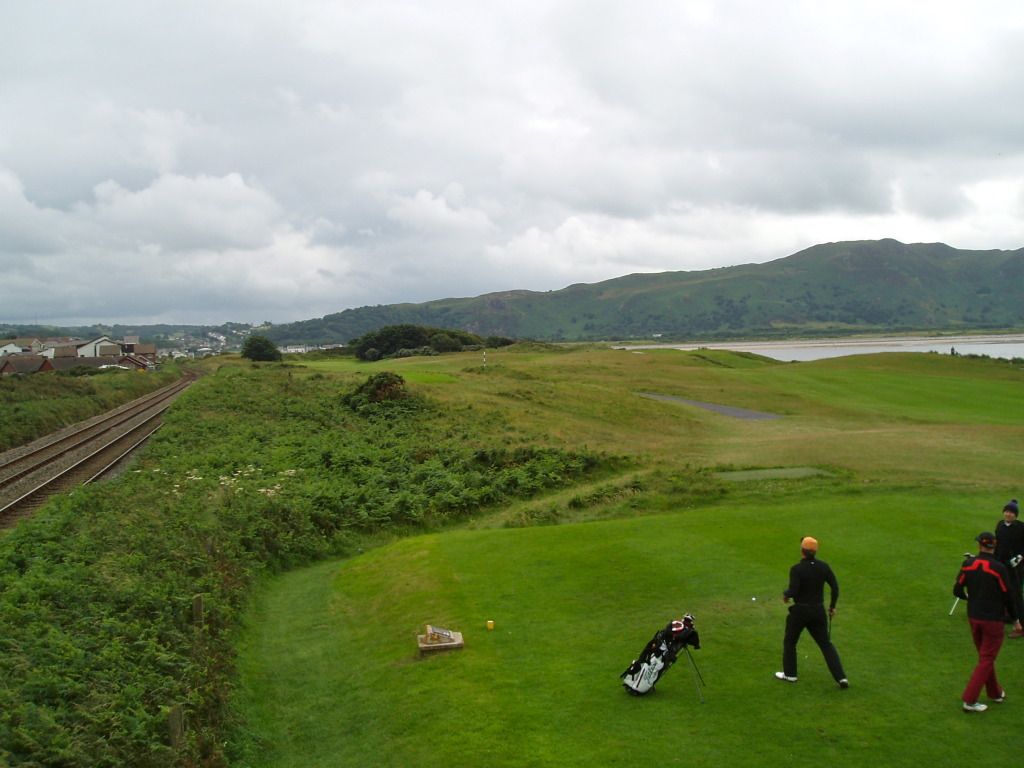
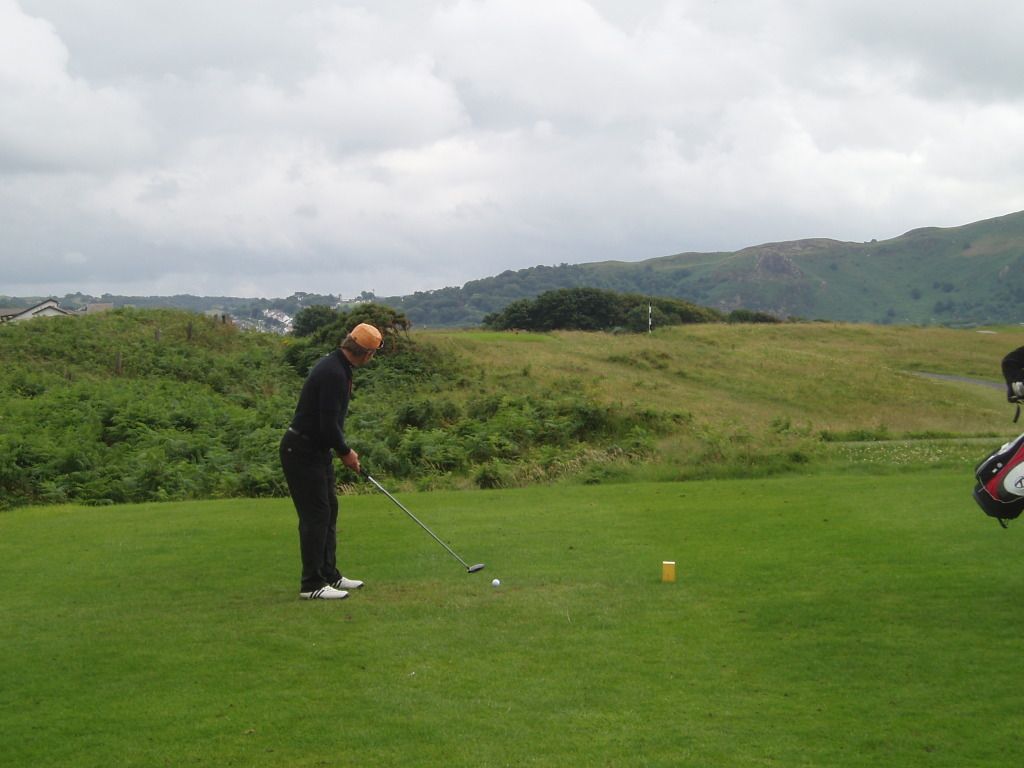
Everything changes for the better, suddenly! As you stand on the tee you have no idea of what is to come. There is, however, a vertigo-inducing ladder which gives a good view of what lies before you and the fate of your companions’ tee shots.
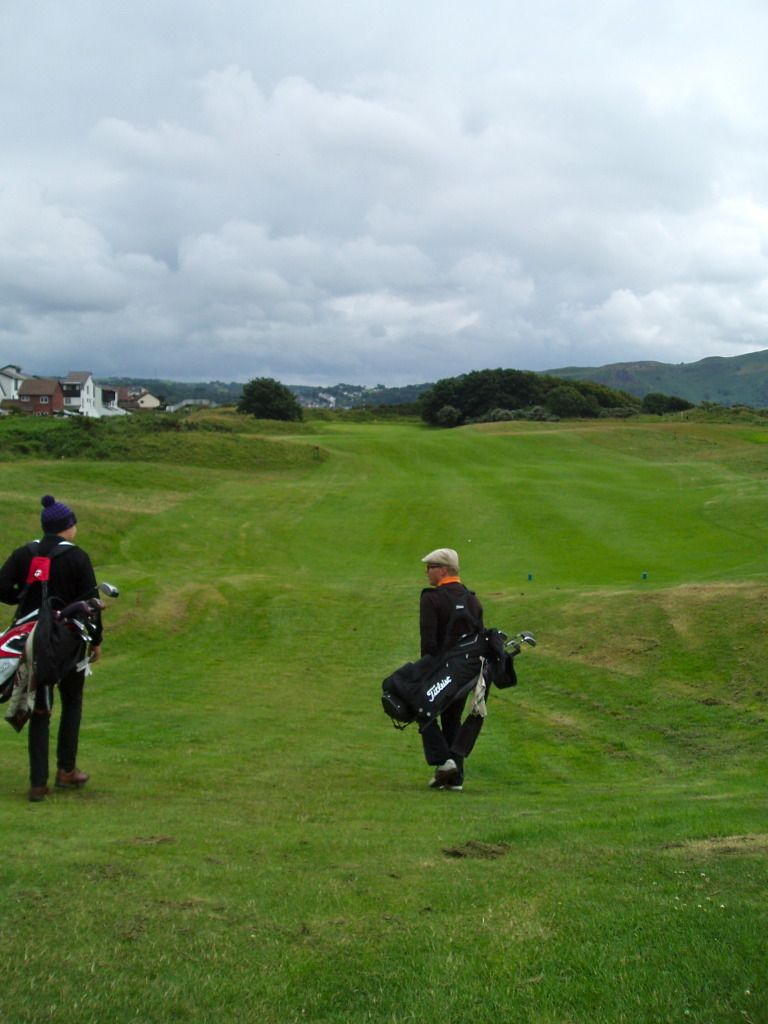
Get over the dunes and you find yourself on a narrow, winding fairway.
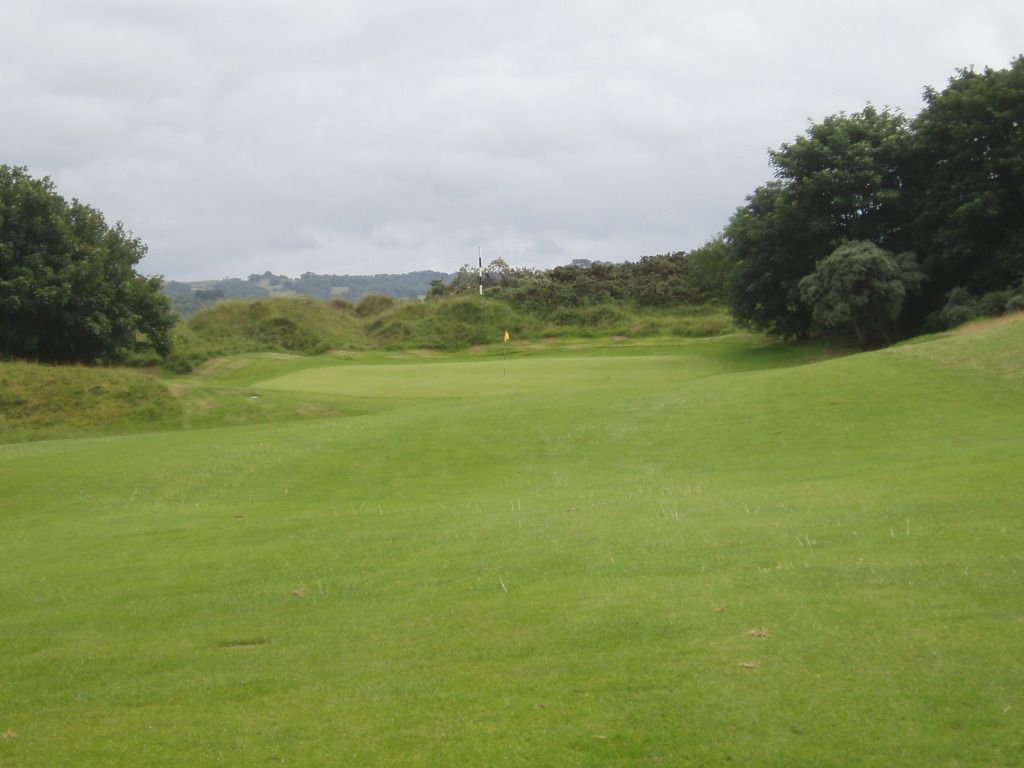
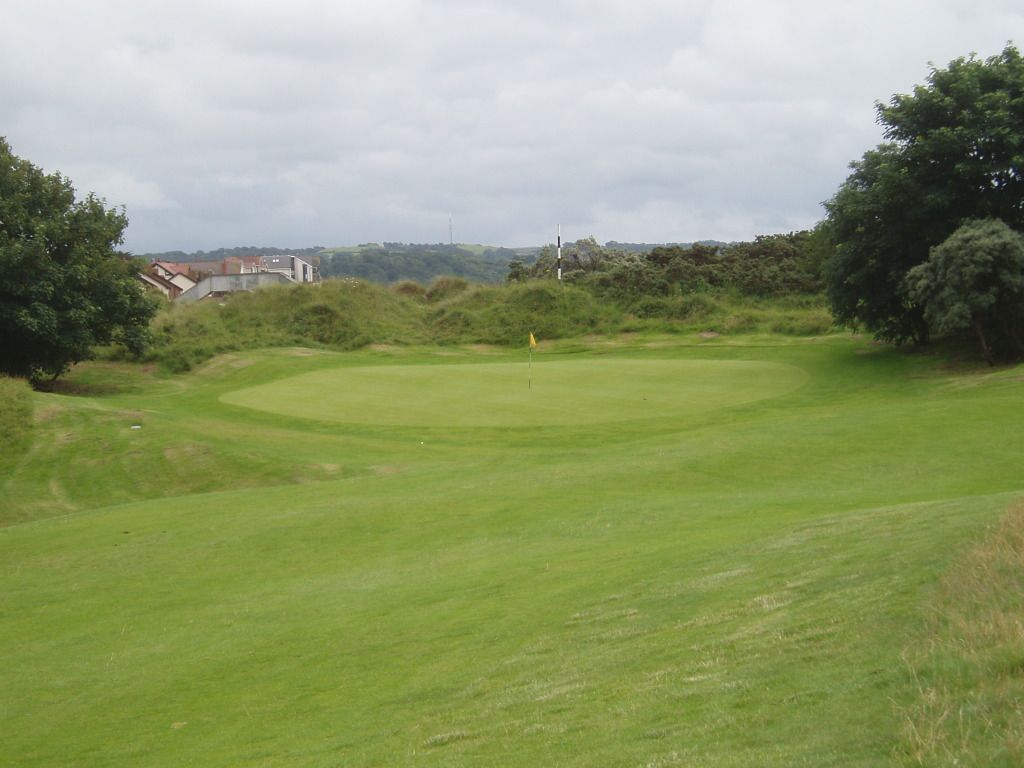
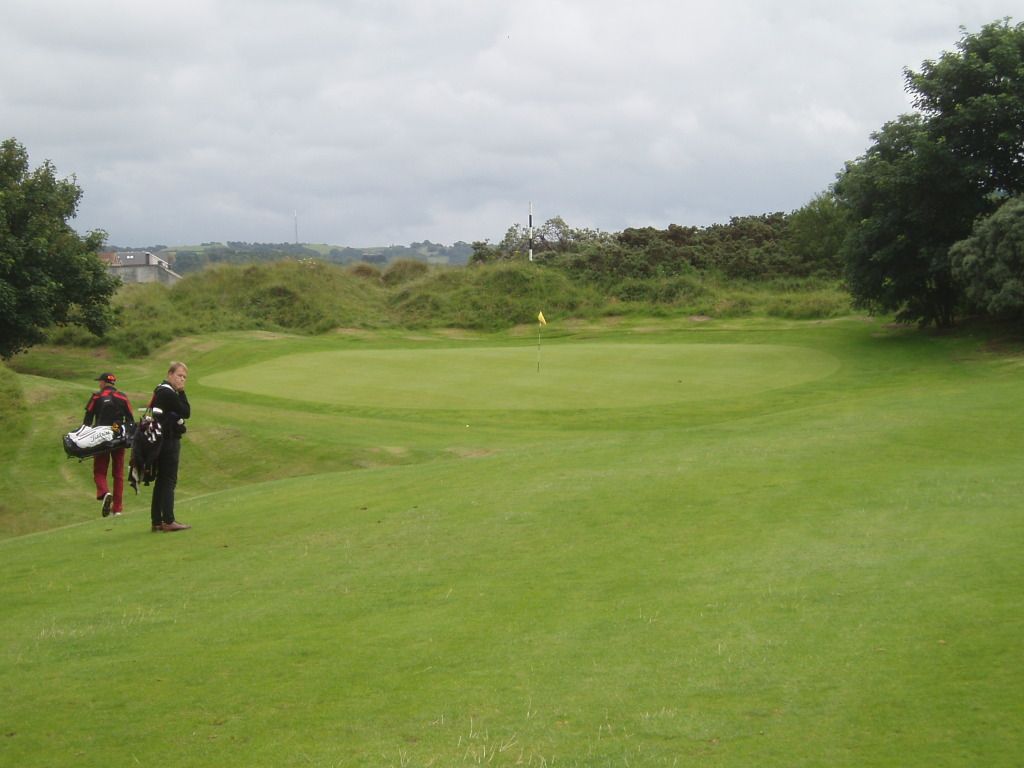
This is an excitingly sited green. We are now at the far end of the course and although the basic layout is out-and back there is plenty of variety of different angles to confront the wind.
9. 345 yards par 4
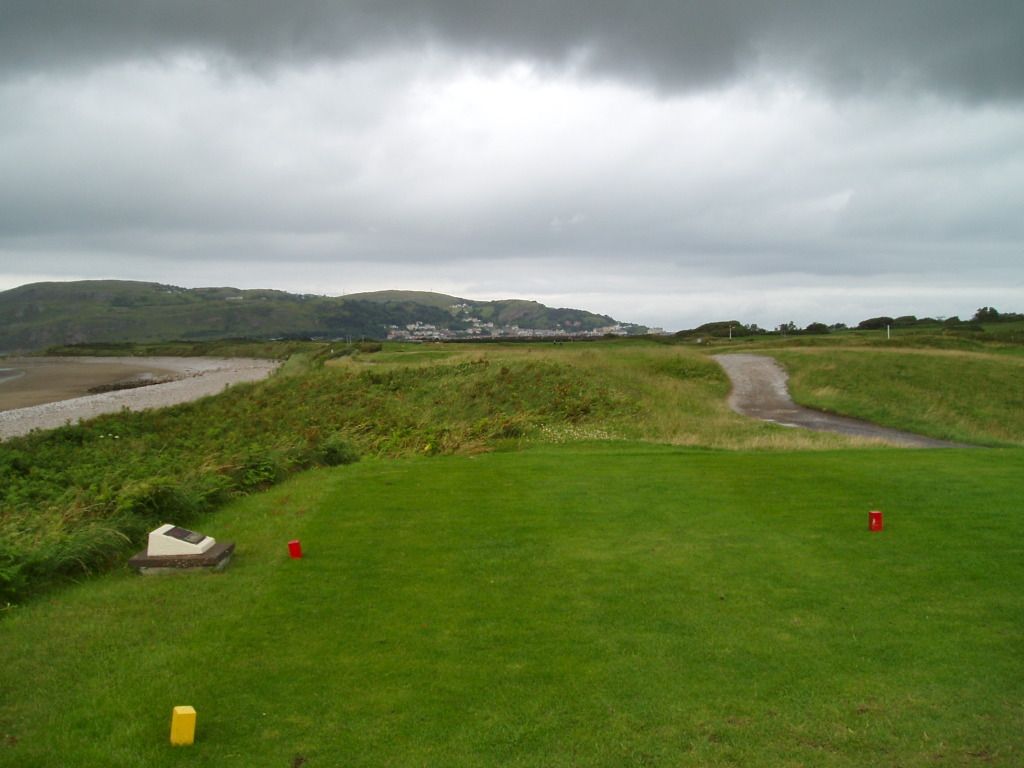
From the tee you have to guess where the fairway is, and penalty for missing on the left is severe – savage, grasping rough or OOB.
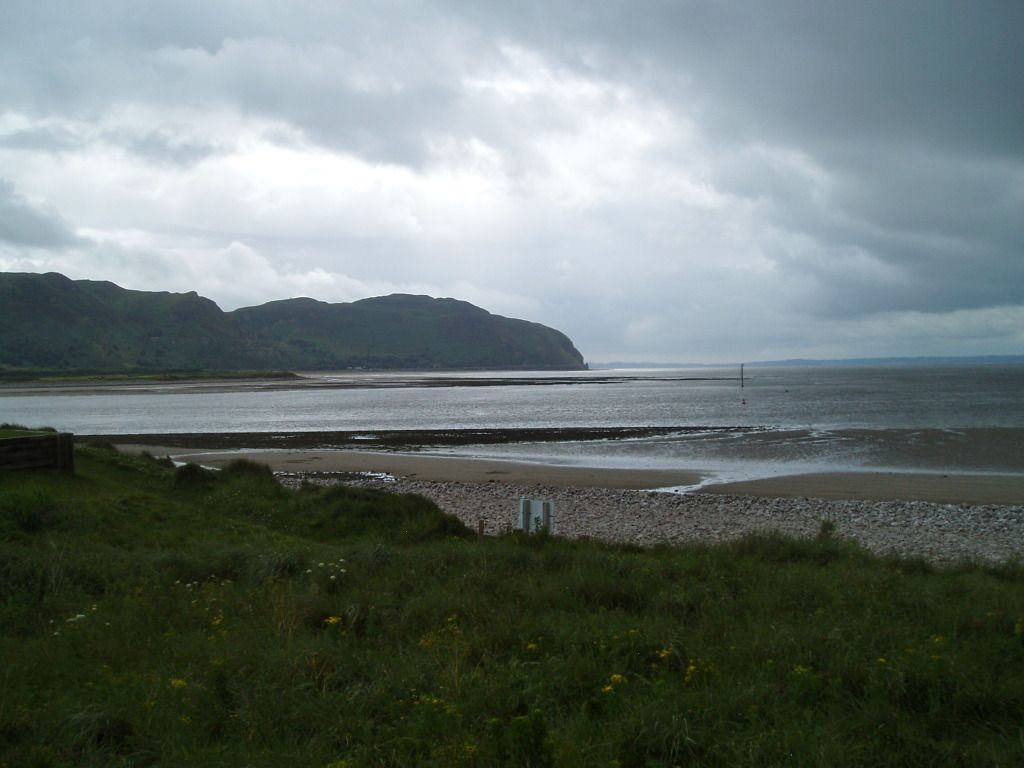
But the views along the coastline are beautiful.
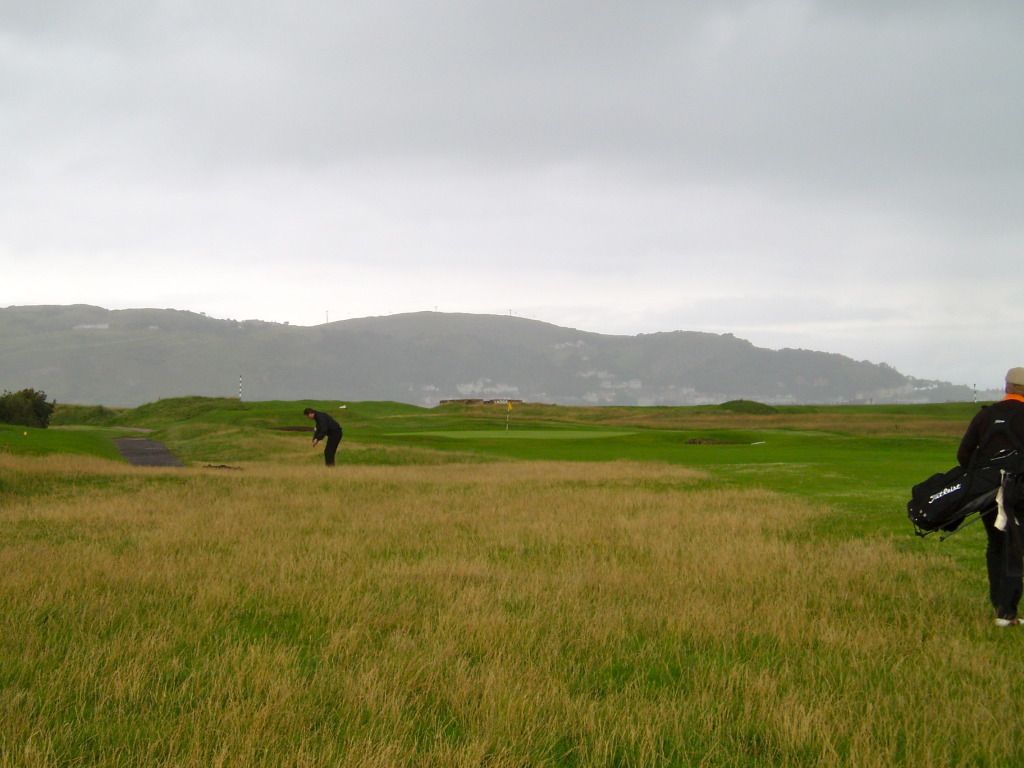
This is the ‘ordinary’ rough between the ‘grasping’ stuff and the fairway.
More to follow....